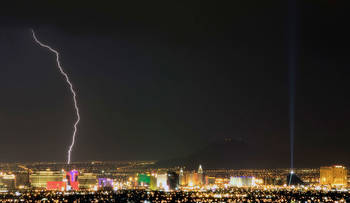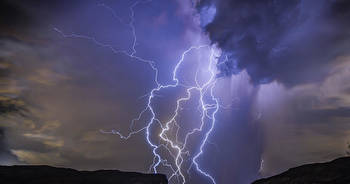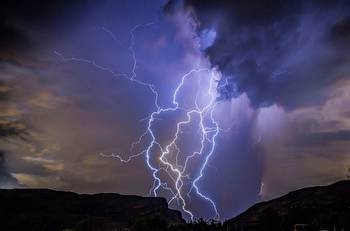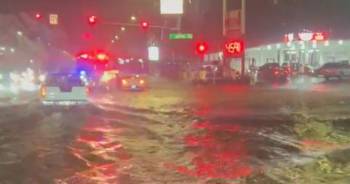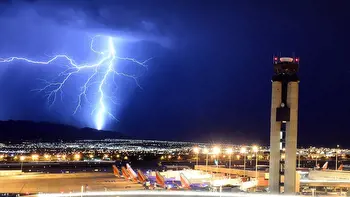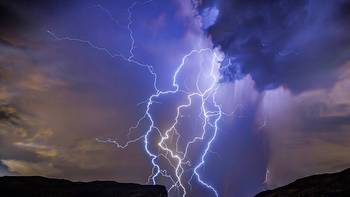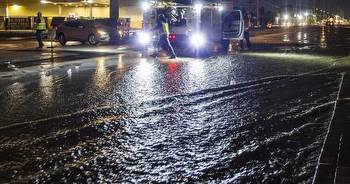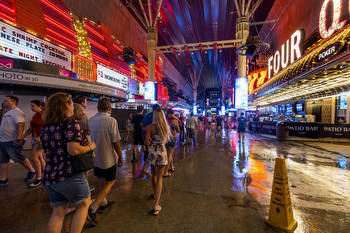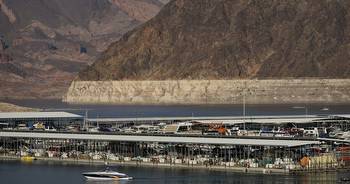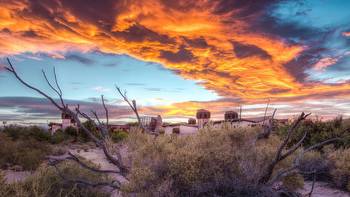Unlike California, Vegas isn’t gambling with its future by squandering water

California, as a whole, doesn’t hold a candle to Las Vegas when it comes to making the tough call on water use
It is hotter.
It is growing faster.
It has less water resources.
And it is reducing water use significantly.
The reason is simple.
Despite creating an oasis for excess in one of the driest spots in the country, Las Vegas has a city leadership that is laser focused on reality.
The odds of nature are stacked against them when it comes to water.
Significantly more so than California that relies on the towering Sierra to drop precipitation from storm clouds on its western slopes before heading over the Great Basin and into Nevada.
Las Vegas in 2002 came face-to-face with reality.
Its water supplies dropped 16 percent because Southern California exercised their full allocation from the Colorado River to combat a drought hitting the Southwest.
To go for broke by not reducing use by ignoring the odds nature has dealt them was recklessly gambling with the sustainability Las Vegas.
They acknowledged that ignoring the streak of “beating” the odds as the West cycles through droughts and even years of normal precipitation as development accelerates was embracing a go-for-broke strategy.
Las Vegas gets 4.2 inches of rain in an average year.
Manteca gets 15 inches of rain in an average year.
The United States, by the way. gets 38 inches of rain in an average year.
There is a dearth of rivers that are major collectors of abundant snowfall that run 100 percent through Nevada that they control the water rights to.
They rely heavily on one river — the Colorado — along with six other states including California.
The Golden State, whose titans of developments realized ago water rights are everything in the West, holds the senior water rights to the Colorado River.
California has the Sacramento and San Joaquin rivers, among others.
Natural precipitation on its own doesn’t support lush rain-nourished lawns and lush landscaping on California or Nevada as it does on the Eastern Seaboard, the South and even much of the Midwest.
So how is Las Vegas doing it?
First or all they made it clear to all of the players at the table — residents, businesses, and farmers — they were playing the long game. The goal was to weather losing streaks of drought and to stay standing.
This meant facing a few facts:
*Almost 60 percent of their water use was outdoors.
*Most of the 40 percent of the indoor water use was captured and sent down drains after it was used, treated, and sent back to Lake Mead where it could be reused.
*Much of Las Vegas was being developed — just like California — with landscaping that was sensible for the Midwest and South.
*The biggest water hog that left water on the table were lawns and the use of non-native grasses.
Lawns that wouldn’t survive on natural precipitation for even a week if they were rolled down as turf has always been the lowest — and biggest — hanging fruit.
Low-flush toilets, water miserly washing machines, low-flow shower heads and such have helped California as well as Nevada reduce water use.
California, as the largest producing farm state in the country, has been reducing agricultural water use.
For years changing technologies have helped reduce farm water use while increasing yield per measurement of water used. California continues to work to do so while at the same time making sure critical replenishing of water tables that agricultural use often provides isn’t lost.
Las Vegas decided the bizarre sacred cow status conferred on having lawns that were as foreign and out of place to the West as McDonald’s is to Carmel-by-the-Sea had to go.
They started the weaning process where they had the mist leverage and made the most sense.
Starting in 2022, they launched an aggressive incentive program to replace existing residential lawns.
Since then, they have removed 205 million square feet of lawn or the equivalent of 4,700 acres. It has been replaced with landscaping that consumes 75 percent less water.
In 2004, they banned lawns in the front yard of all new residential subdivisions.
The Nevada Legislature in 2021 passed a law requiring that all nonfunctional grass — in street medians, homeowners associations (i.e., sound wall and median landscaping), businesses and apartment complexes — be replaced by 2027.
Las Vegas is now prohibiting lawn areas in the backyards of new homes as well. The only place in Vegas lawns can be planted are in parks, schools, and cemeteries.
Golf courses have been put on water budgets.
Unlike Californians that seem to have an attention span on water concerns that lasts until three months after a drought ends or three months after a flood devastates their community, Vegas treated it like the life and death resource that it is.
That approach has allowed the community as a whole to ignore the incessant whining over the loss of what is basically eye candy.
It doesn’t look right not having lawns to gaze upon is the major complaint of those that were not raised in the desert.
The truth is what we are doing in large swaths of California as well as places like Nevada doesn’t look right based on the natural perimeters.
The CO2 consuming properties of lawns as well as their ability to generate oxygen has been replaced by other landscaping that is doing the job just fine while using 75 percent less water.
Researcher Brian Richter looked at population and water consumption trends in the greater Las Vegas area.
Due to steps authorities have taken primarily with lawns, between 2000 and 2020 water use is down 18 percent whole the population is up 24 percent.
That reflects a per capita of water use exceeding 48 percent in Southern Nevada.
Do not misunderstand. California needs to aggressive pursue groundwater recharging.
The state needs to construct more above ground storage despite evaporation issues and dead storage that renders a good chunk of reservoir water useless for downstream use as it is below the outlets.
Those reservoirs must be built in the lower elevations where they make sense for changing weather patterns.
And perhaps most important, we’ve got to stop acting like undisciplined gamblers.
We can’t afford to get swept up in the siren song of winning streaks such as periods of exceptional snow and rain.
That’s because the odds are slanted heavily in the West toward reverting to losing streaks of drought regardless of the 2023 take on climate change.
To bet water that somehow we can continue to beat the odds without severe consequences is the very definition of a water guzzling gambling addict.












